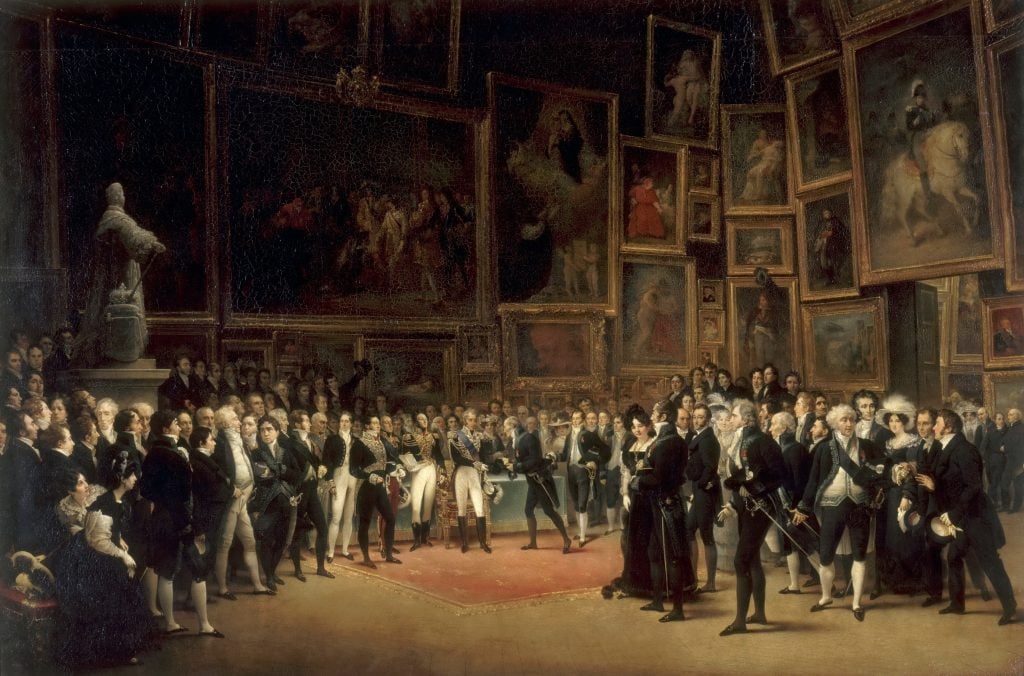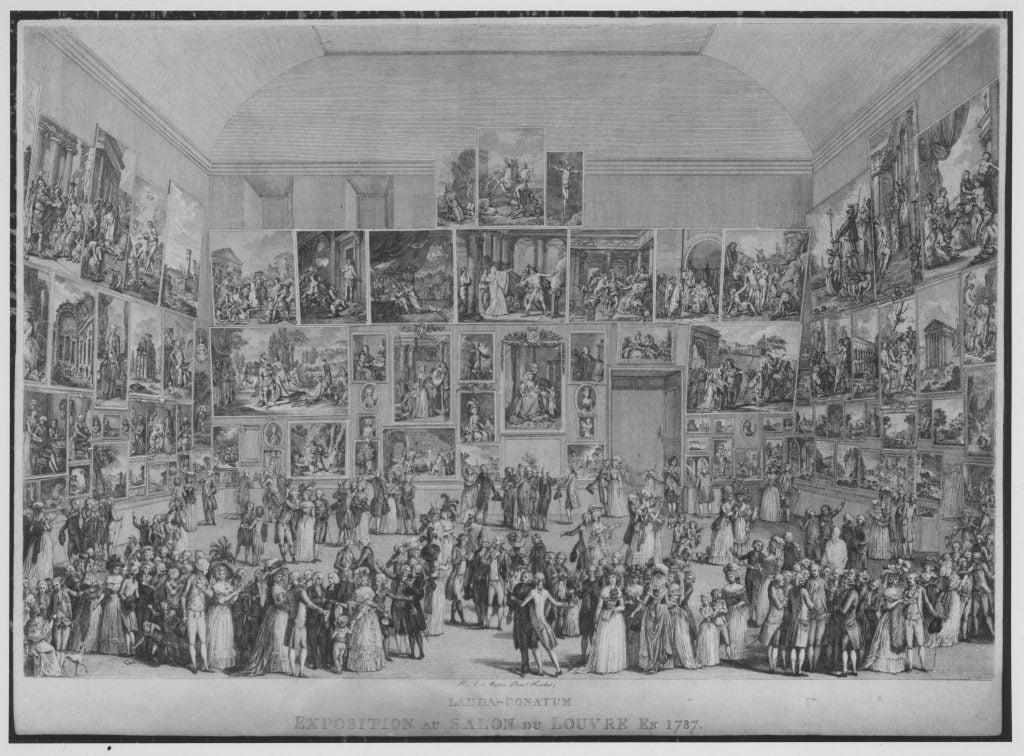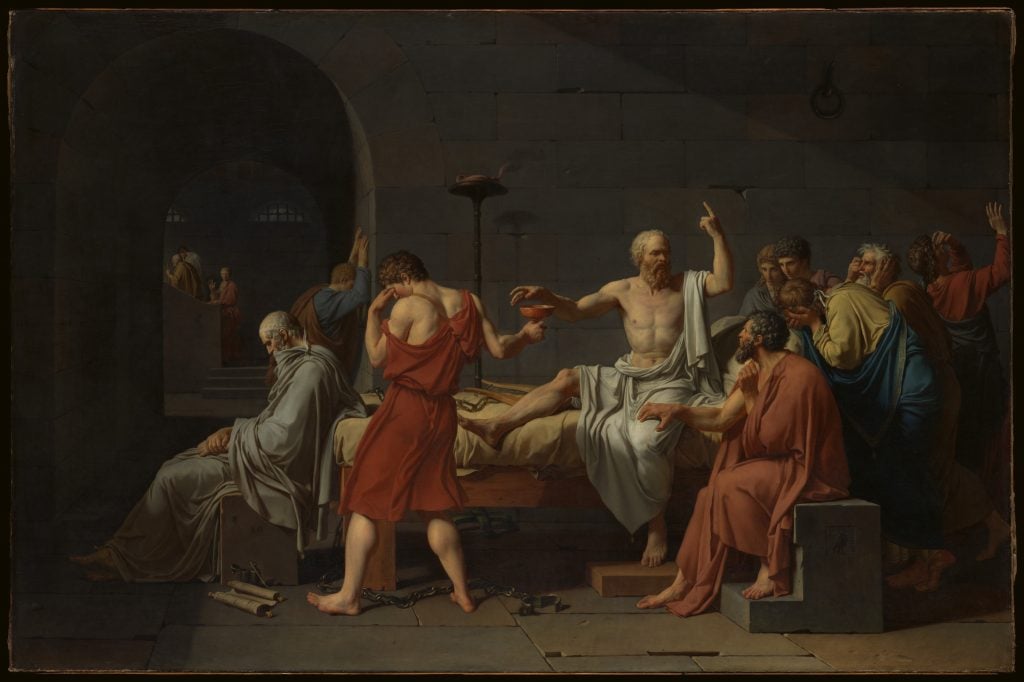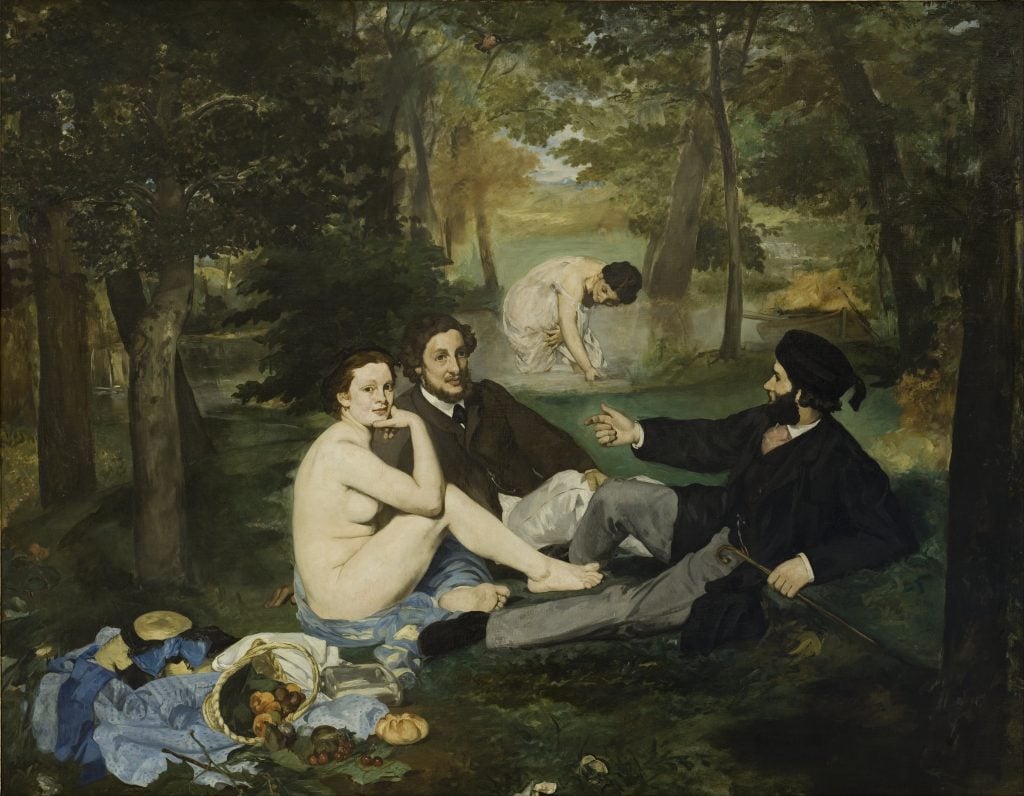Art World
Art Bites: Where Did the Paris Salon Come From?
Beginning in 1725, the French exhibition format was the ultimate arbiter of taste.

Among the problems facing Napoleon III in 1863 was a legion of grumpy artists. That year, the Salon’s notoriously conservative jury had rejected two thirds of the works presented, duly infuriating the likes of Édouard Manet, Camille Pissarro, and Paul Cézanne.
Ever the aspiring populist, Napoleon sanctioned the Salon des Refusés allowing the masses to judge the 780 works themselves. Thousands did so each day, cramming into the Palais de l’Industrie to gossip and gawk at the Salon’s rejects. Though widely ridiculed, it was a momentous show, loosening for a first time the establishment’s monopoly on art.
This control was long baked in. In 1648, a nine-year-old Louis XIV backed the formation of the Royal Academy of Painting and of Sculpture at the behest of Charles Le Brun. Its initial function was to produce French artists who could execute royal commissions with nationalist flair—no more shelling out on Flemish or Italian masters. The Salon was a natural outgrowth of this system.

Pietro Antonio Martini, Exposition au Salon du Louvre en 1787, 1787. Photo: epia Times/Universal Images Group via Getty Images.
Beginning in 1667, the Academy held sporadic exhibitions, allowing its members to present their talents to potential patrons. After relocating his court to Versailles in 1682, the Sun King designated a section of the Louvre to the Academy. The gatherings became more formalized and frequent in the 1720s after moving into the Salon Carré, the rectangular-shaped room from which the exhibition derives its name.
In 1737, the Salon opened to the public and offered rare access to art in an era before museums. Paintings were selected by a jury of academics based off a strict hierarchy. First came history paintings (think biblical scenes, great battles, classical mythology). Next came portraiture (of royalty, naturally), then genre paintings and landscapes. The lowly still life was last.

Jacques-Louis David, The Death of Socrates, 1787. Photo: The Metropolitan Museum of Art.
Every inch of the Salon Carré was filled with paintings arranged in keeping with this hierarchy, a clustered scene that in time became its own painterly subject. Held annually and later biannually, the event fomented intellectual debate and produced art criticism that in time spilled into the country’s newspapers.
Art, however, was not beyond the clutches of the revolutionary spirit that was sweeping France in the latter 1800s and in 1893 the Academy was abolished following Louis XVI’s execution. The Salon switched from royal to governmental supervision and in 1795 was opened to all artists, including those from outside of France.

Édouard Manet, Le Déjeuner sur l’herbe (1863). Collection of the Musée d’Orsay, Paris.
The École des beaux–arts that replaced the Academy might have been new and unbound to royalty, but the Salon remained governed by conservative tastes. For much of the 19th century, the annual event remained the only opportunity for young artists to garner acclaim and new patrons. In time, this control over what was deemed ‘good’ art produced splinter salons.
Napoleon III set a precedent with the Salon des Refusés—one repeated in 1874, 1875 and 1886. The Salon des Indépendents and the Salon d’Automne carried the spirit further, placing newfound importance on work that broke from tradition in color, composition, and subject.
Paris didn’t look back. By the dawn of the 20th century, the Salon’s status as the arbiter of artistic taste was a fading memory.
What’s the deal with Leonardo’s harpsichord-viola? Why were Impressionists obsessed with the color purple? Art Bites brings you a surprising fact, lesser-known anecdote, or curious event from art history. These delightful nuggets shed light on the lives of famed artists and decode their practices, while adding new layers of intrigue to celebrated masterpieces.





